Police have fired tear gas, rubber bullets and water cannon containing dye and tear spray at pro-democracy protesters, as Hong Kong entered its fifteenth week of demonstrations.
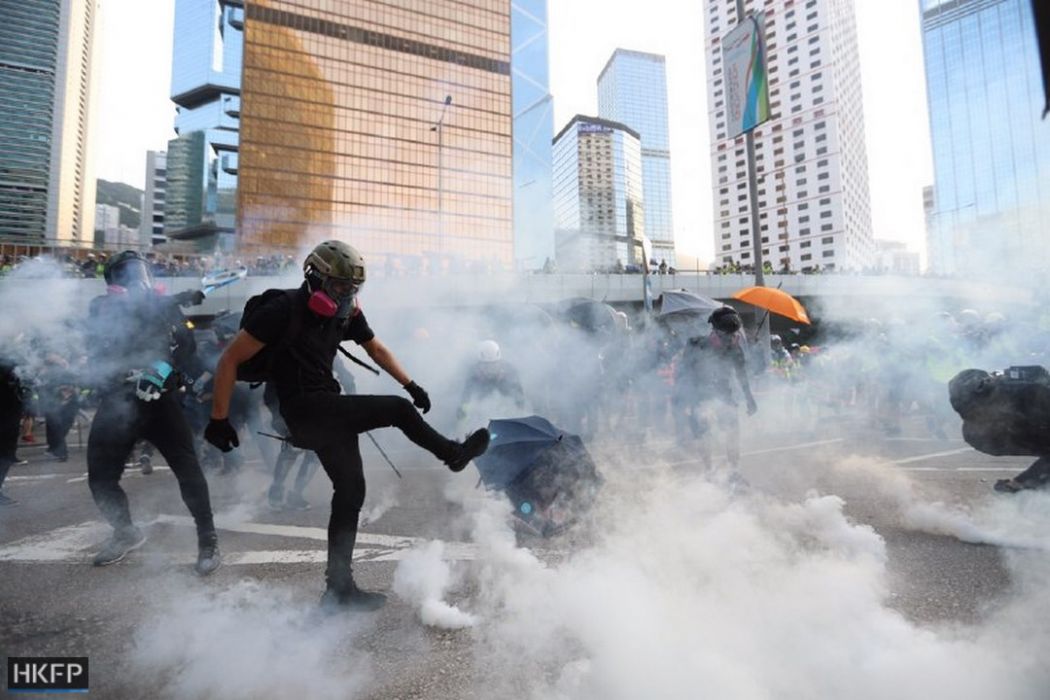
The march, originally organised by the Civil Human Rights Front, was cancelled after the police objected to the event.
But on Sunday, thousands still took to the streets in defiance of the ban.
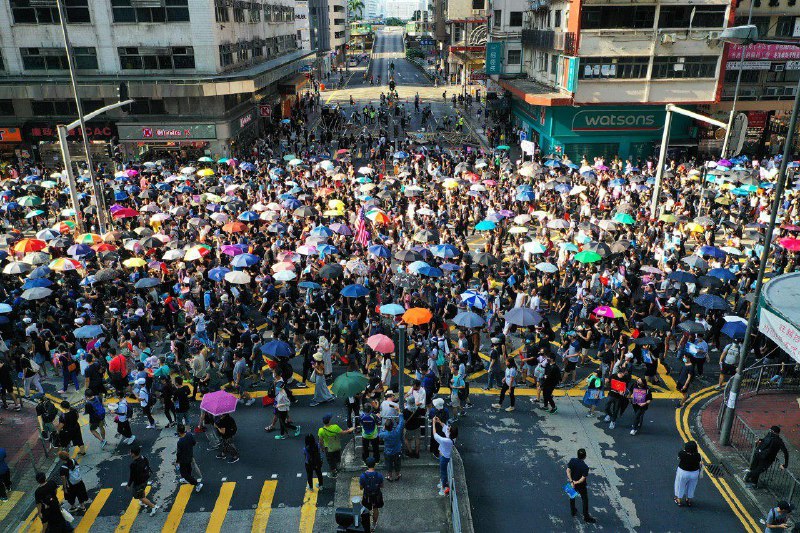
The march began at around 2:30pm at East Point Road in the commercial area of Causeway Bay, the original starting point of the protest.

The MTR Corporation enacted crowd control measures to deal with the influx of people, including halting some escalators.

Before the march started, Democratic Party lawmaker Lam Cheuk-ting told HKFP that he believed people would be undeterred by the police presence at MTR stations.
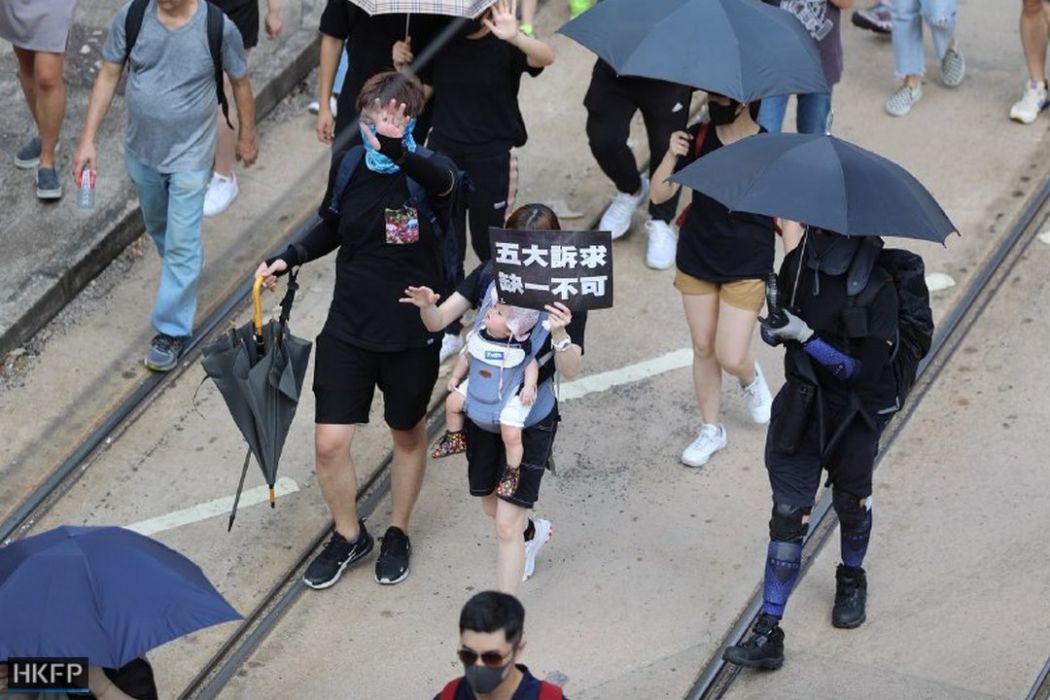
“Of course, the police force try to make use of the MTR system to deploy increased manpower to suppress our movement. But I do not think Hong Kong people will back down and if [police] try to use any excessive power to stop them, they will just spread to other parts of Hong Kong,” he said.
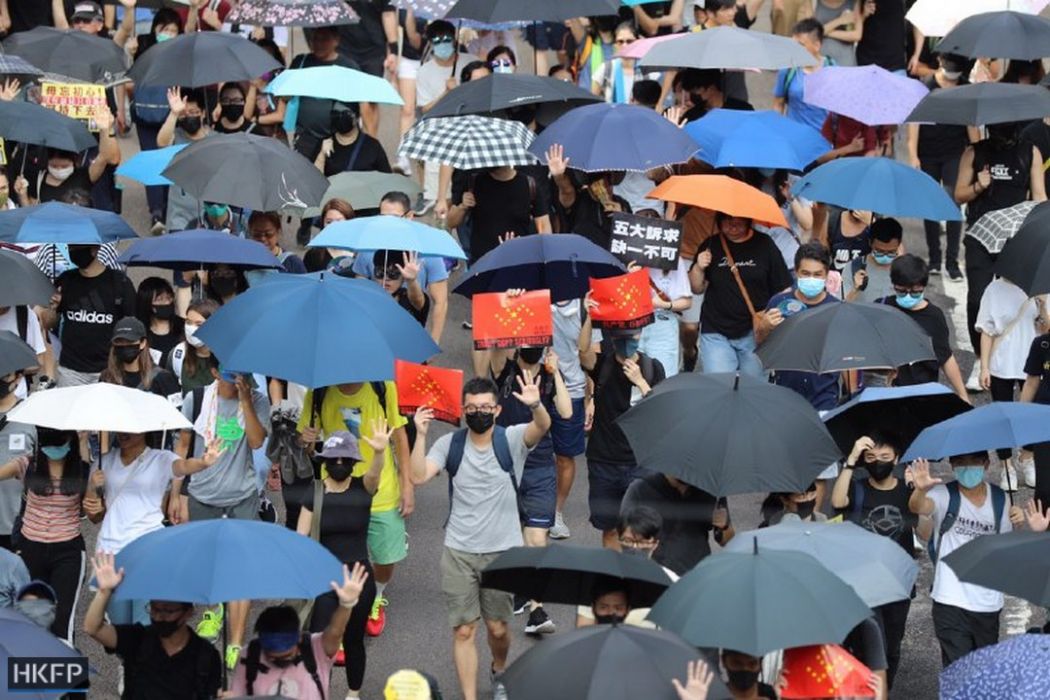
During the march, several police officers were stationed on an overpass near Arsenal Street leading to the police headquarters in Wan Chai.

As crowds walk past, some jeered at the officers while hurling insults such as “gangsters” and “black cops.”

As the procession moved from Causeway Bay to government headquarters in Admiralty, some vehicles – including a doubledecker on Jackson Road and on Connaught Road – became stuck briefly in the crowds.

Ms Chow, a 24-year-old registered nurse, told HKFP that she had attended most weekend rallies and wanted to do so again on Sunday to mark the International Day of Democracy.
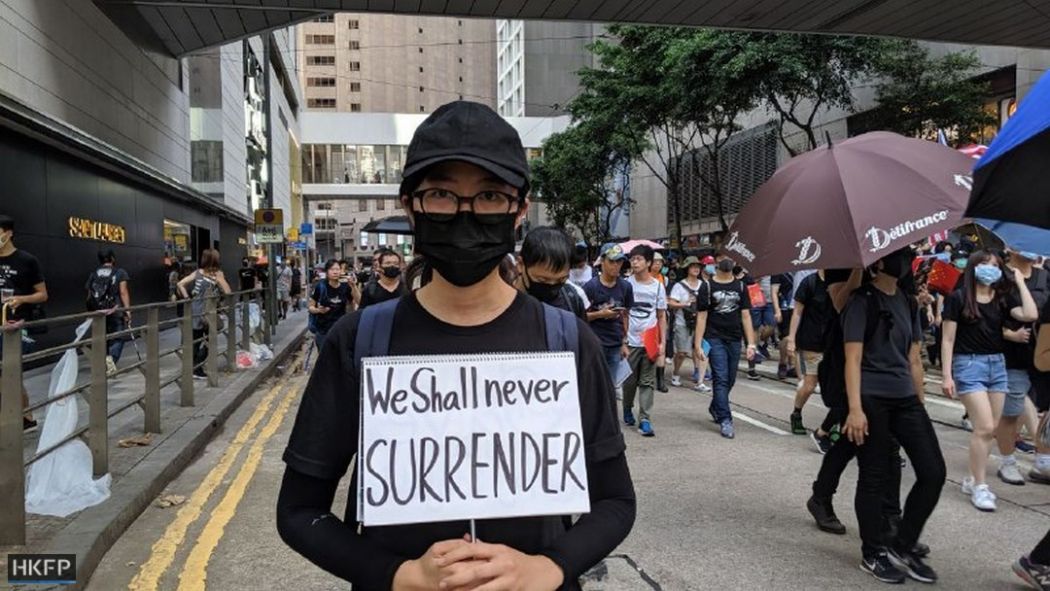
“Even though the police rejected our march today we will still come out because it is our right to do it,” she said.

“I think the majority of Hong Kong people are not afraid of coming out.”

A large white banner was unfurled opposite the Central Government Offices reading “I want democracy.”
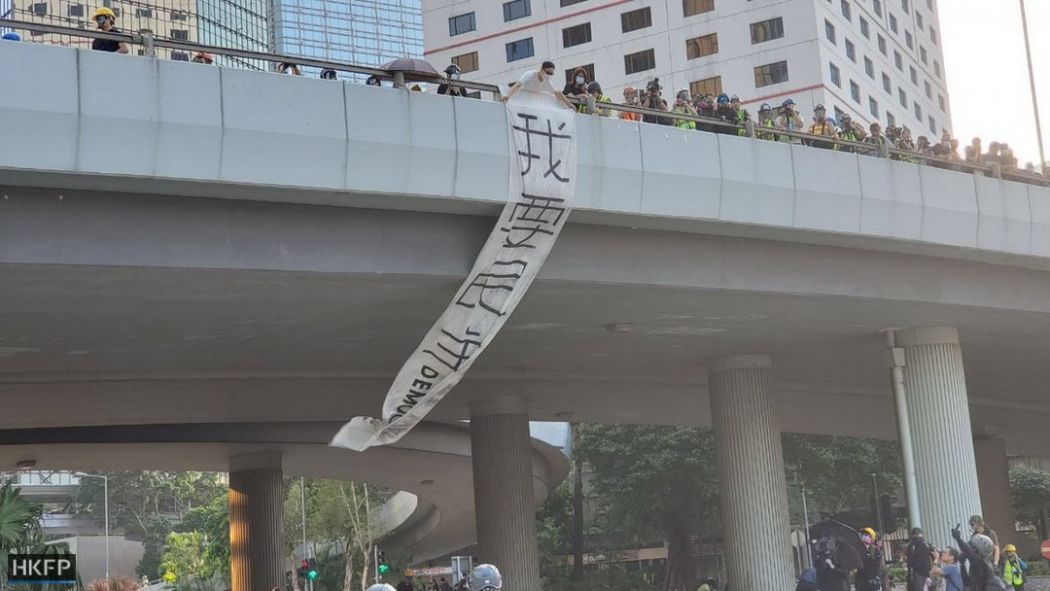
A 40-year-old teacher, who wished to remain anonymous, told HKFP she considered the police prohibition of Sunday’s original march to be unacceptable.

“We’re not satisfied with the withdrawal [of the extradition bill]. It’s too late,” she said.

“After three months, she just said those two words – she has been playing these word games. It’s dirty, the whole government is dirty.”
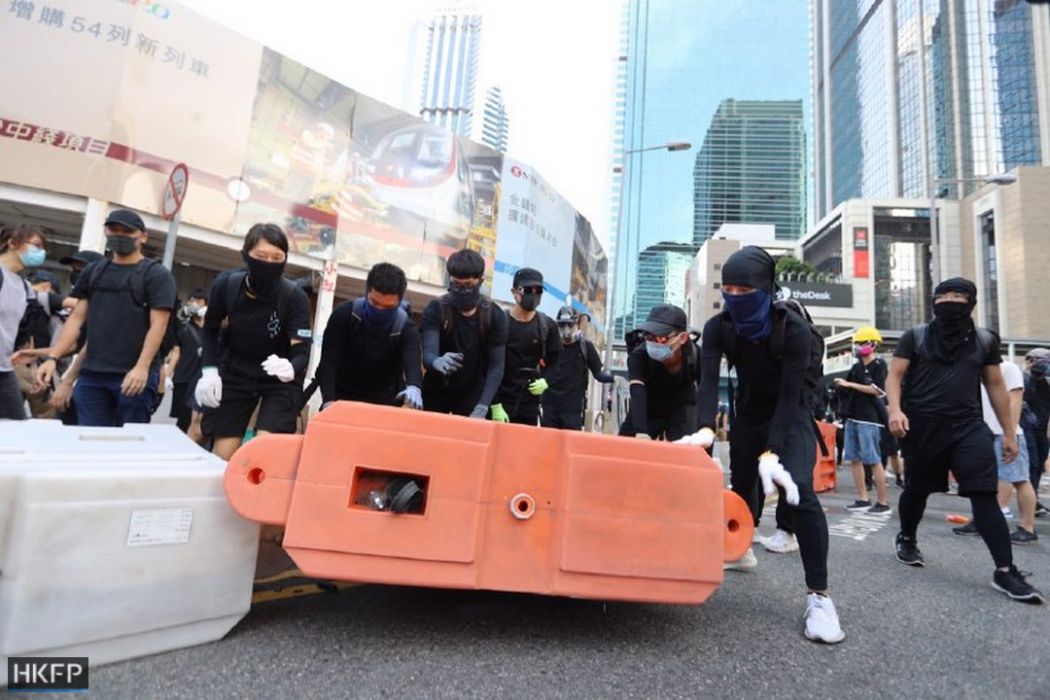
Rally-goers held placards saying “Five demands, not one less,” in reference to the five requests made by protesters to the government: withdraw the extradition bill, retract the categorisation of protests as riots, drop all charges against those involved in the movement, investigate police misconduct, and transition to full democracy.

Only the first demand has been met after Chief Executive Carrie Lam announced last Wednesday – nearly three months into the protests – that the bill would be withdrawn.
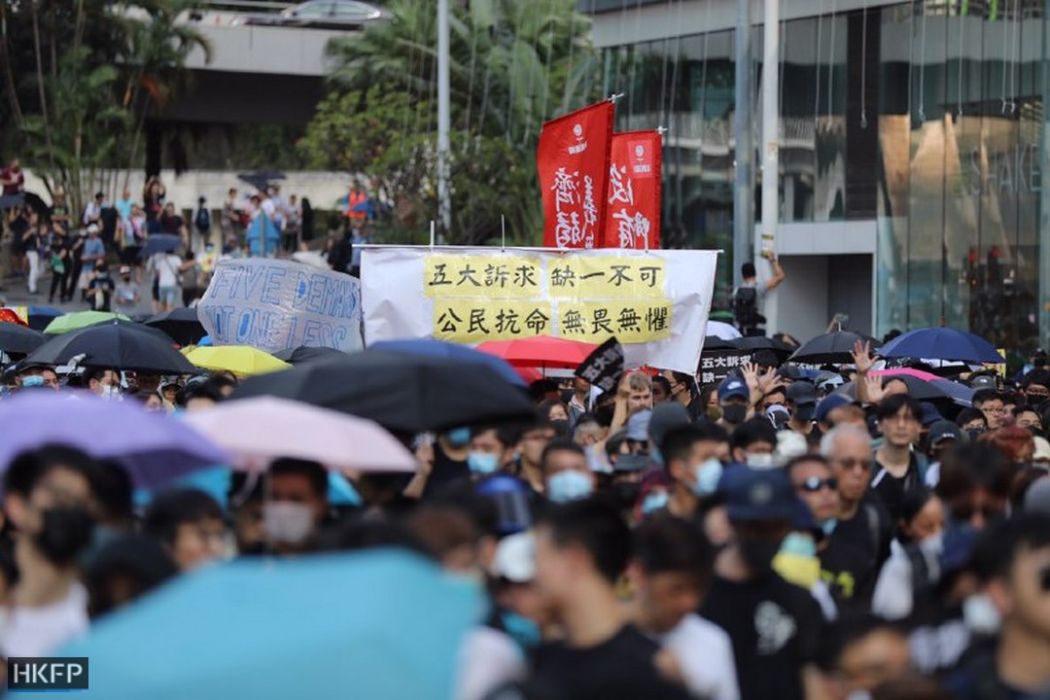
A woman distributed alcohol wet wipes to black-clad protesters and members of the press. She told HKFP the wipes can be used to remove blue stains from the water deployed by water cannon trucks.
A black-clad person wearing a storm trooper mask, from the franchise Star Wars, has scaled a tram stop on Des Voeux Road Central, waving a toy light laber and a US flag, to approving cheers from the crowd.
In full: https://t.co/kmLJLFCnSX. #hongkong #hongkongprotests #antiELAB pic.twitter.com/JoqO8lvYNn
— Hong Kong Free Press (@HongKongFP) September 15, 2019
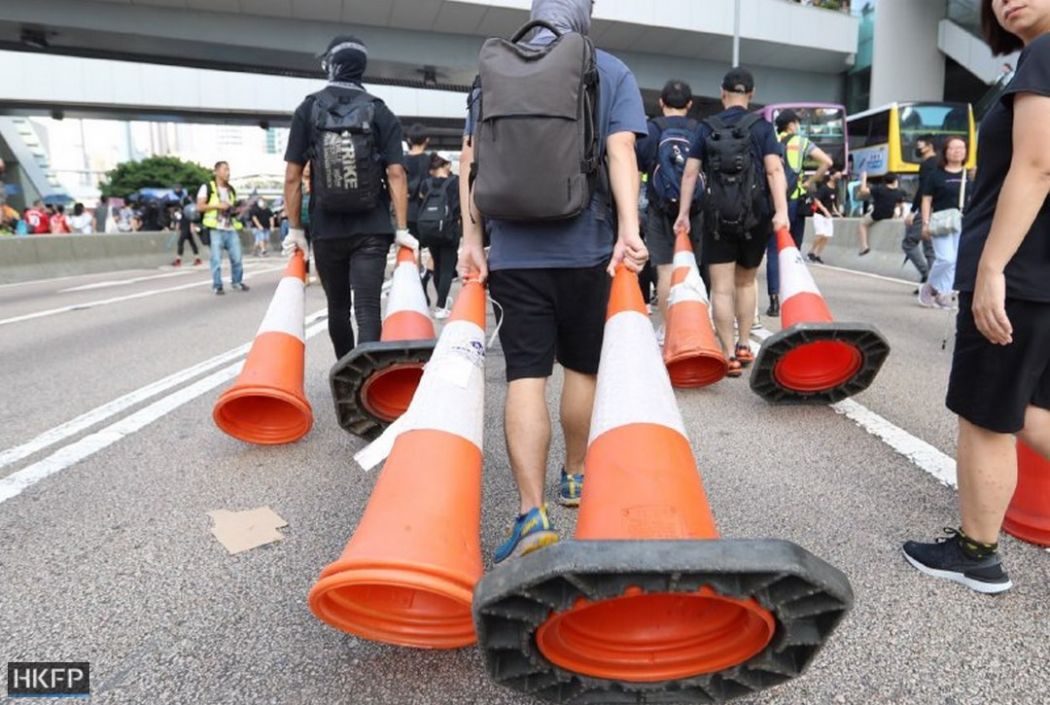
By 4:30pm, the key flashpoint of Harcourt Road outside Hong Kong government headquarters was occupied by protesters, as traffic came to a halt.

Police fired tear gas in Admiralty shortly after 5pm as protesters hurled dozen of Molotov cocktails and bricks at the government headquarters and police frontlines.

In Admiralty, HKFP observed a tear gas cannister fired at journalists.

Police also fired rubber bullets at protesters.

Around the same time, protesters readied themselves for clashes by digging bricks from pavements and setting up barricades at the closed Admiralty MTR Station.

Meanwhile, MTR exits along the protest route were vandalised.

At around 5pm, the MTR said the Admiralty Station was closed. Some exits were closed at Sheung Wan, Central, Wan Chai and Causeway Bay stations.
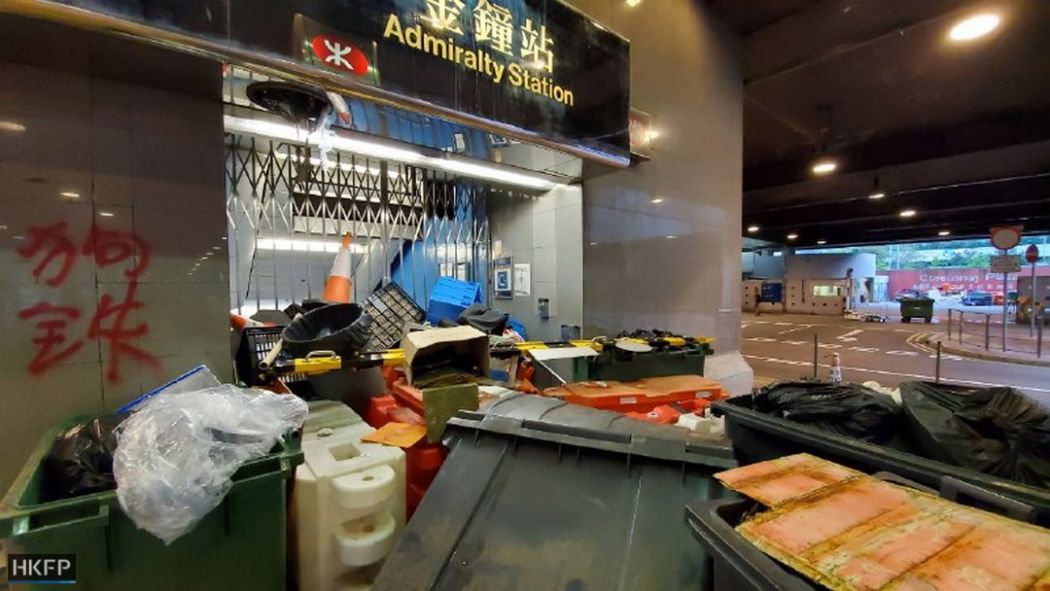
At around 5:30pm, riot police were photographed riding an MTR train at Wan Chai station.
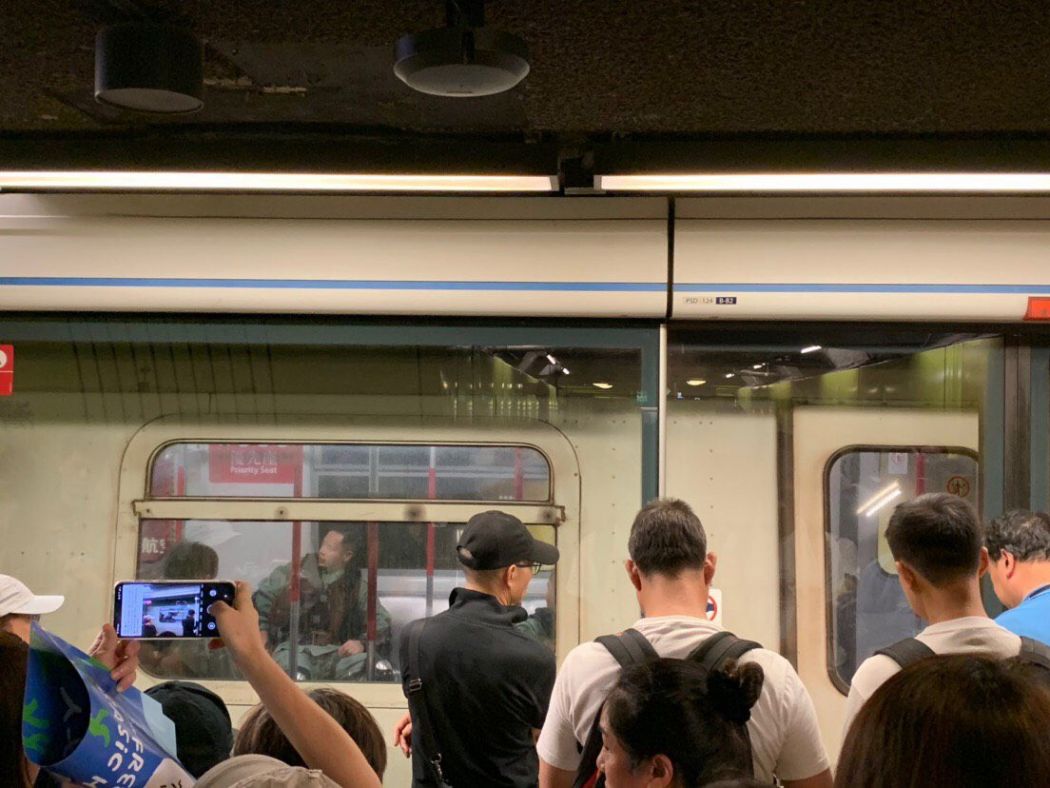
At 5:35pm, water cannon trucks fired jets of water outside the government headquarters in Admiralty. Some protesters threw Molotov cocktails at them in response.
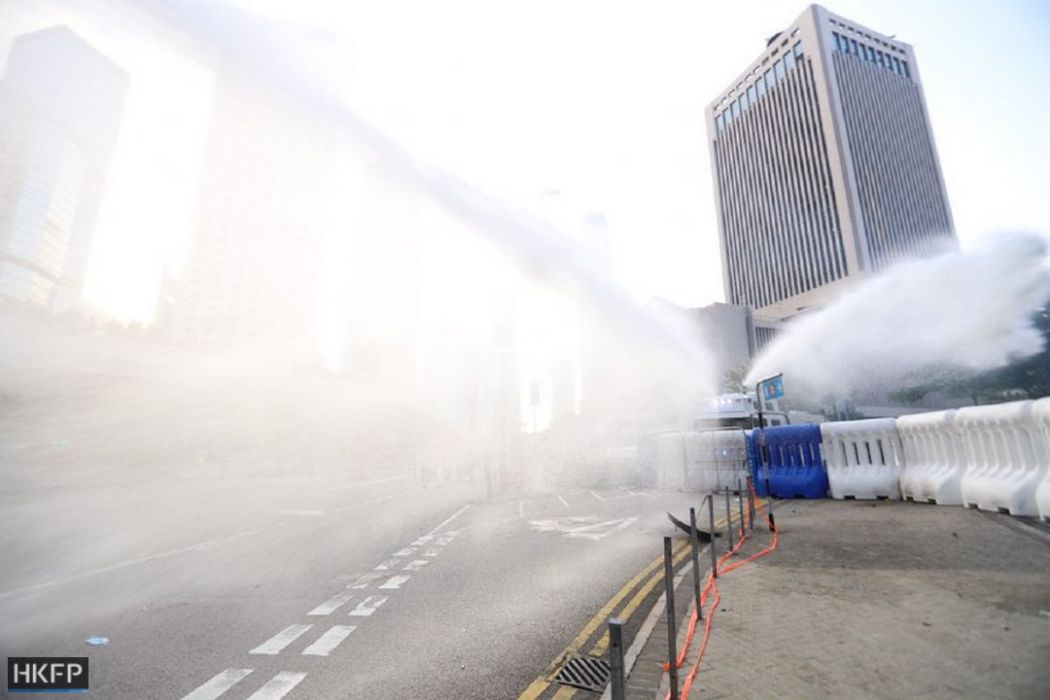
Those hit by water cannon, including journalists, appeared in pain as their skin reacted to the chemical shot from the trucks.
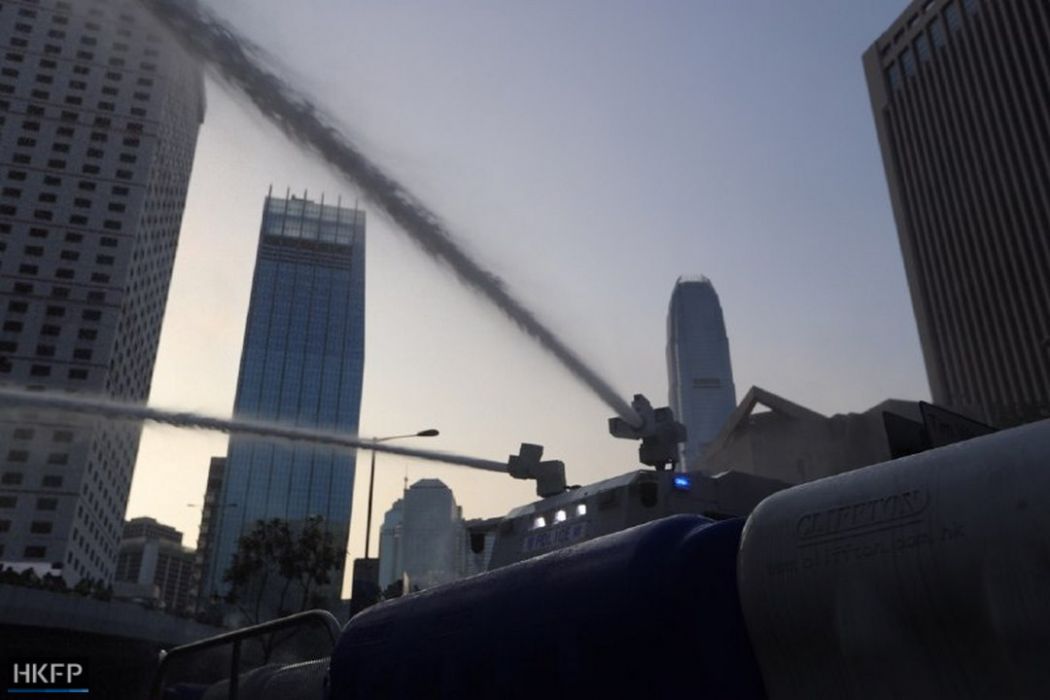
The MTR Corporation has become a target of the protesters, after the railway company was accused of failing to ensure the safety of passengers in numerous incidents throughout the months-long protests.
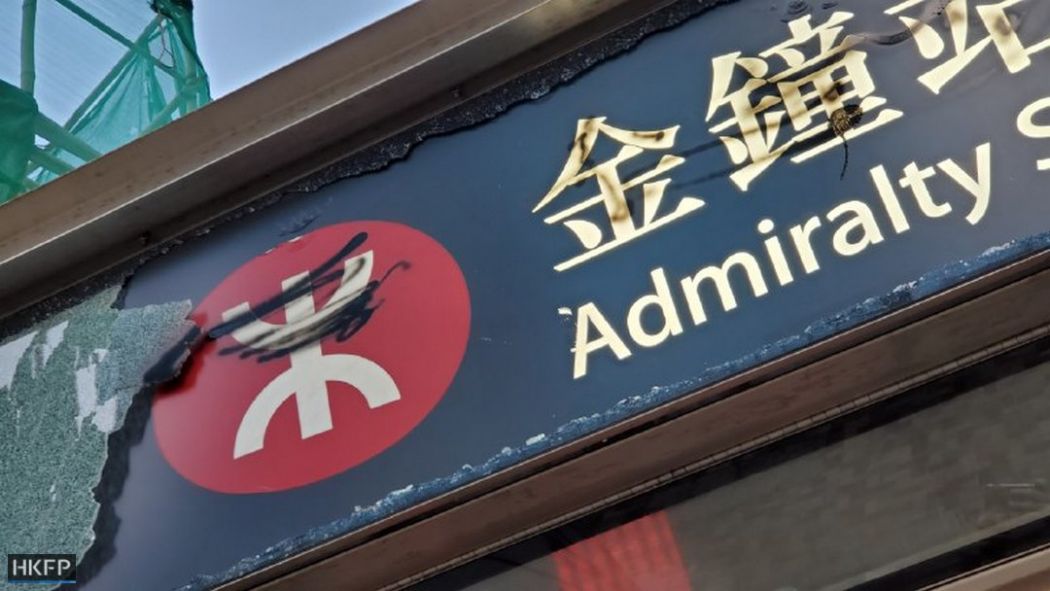
During the Sunday march, protesters vandalised the property of the MTRC in Admiralty.
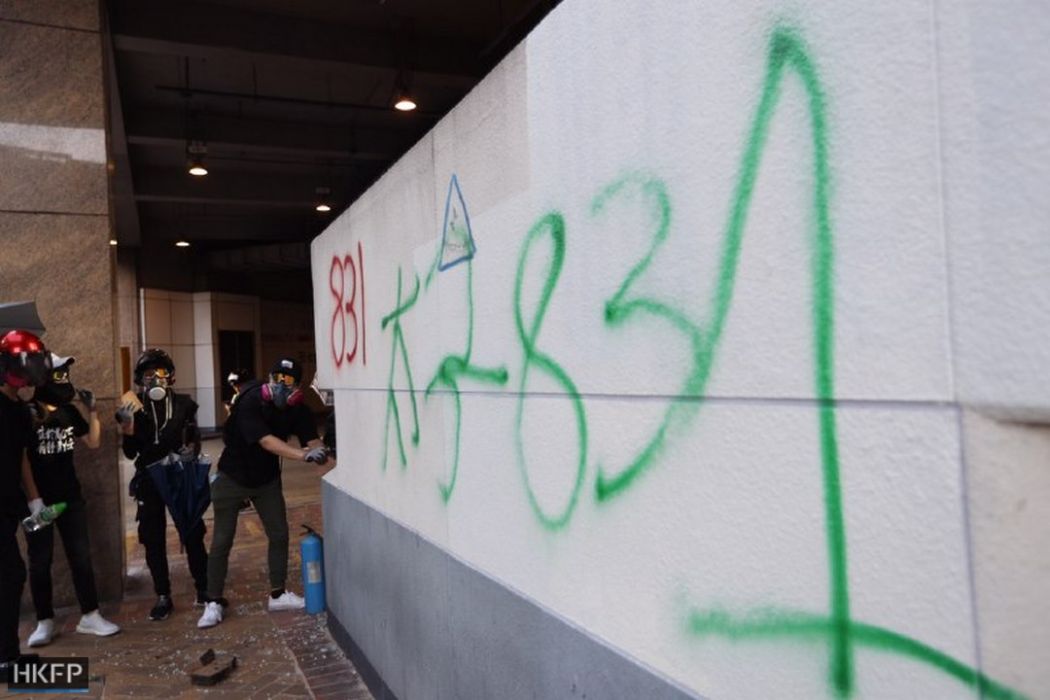
At 5:33pm, Police said in an announcement: “Radical protesters gathering near Admiralty and Central area have committed destructive acts extensively.

Some of them dug up bricks from pavements and threw hard objects, including bricks, into Central Government Offices, posing serious threat to public safety in the vicinity.”

The force warned the protesters to “stop their illegal acts and leave the scene immediately.”

At around 6:30pm, a large fire was set at an exit to Wan Chai MTR station on Hennessey Road. Firefighters arrived at the scene to extinguish the blaze.
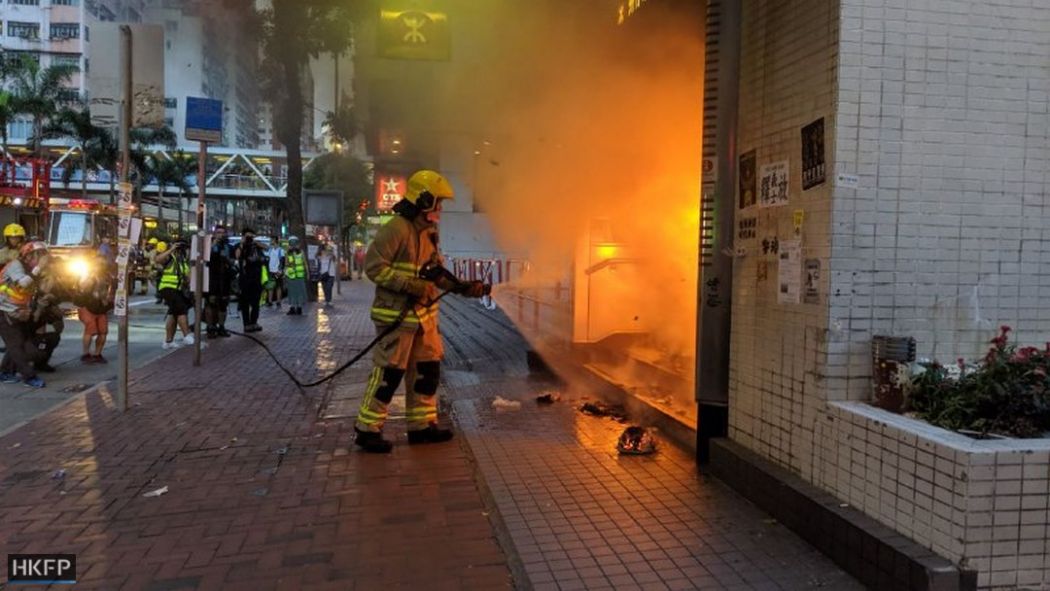
As of 7:30pm, the MTR said Admiralty, Wan Chai and Causeway Bay stations were closed, while South Island Line trains would start and stop service at Ocean Park Station.

Hong Kong’s summer of protest was initially sparked by the now-withdrawn bill that would have allowed local authorities to transfer fugitives to their mainland counterparts.

The demonstrations have since morphed into sometimes violent displays of dissent against Beijing’s encroachment, alleged police violence, and other community grievances.

The Hong Kong government has repeatedly condemned acts of violence and vandalism by “radical protesters.” China’s foreign ministry has repeatedly warned other countries to “stop interfering in Hong Kong’s affairs.”
Hong Kong Free Press relies on direct reader support. Help safeguard independent journalism and press freedom as we invest more in freelancers, overtime, safety gear & insurance during this summer’s protests. 10 ways to support us.

